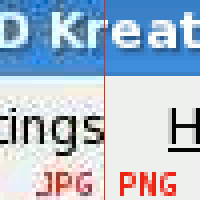Our website is made possible by displaying online advertisements to our visitors.
Please consider supporting us by disabling your ad blocker.
Lossy compression

In information technology, lossy compression or irreversible compression is the class of data compression methods that uses inexact approximations and partial data discarding to represent the content. These techniques are used to reduce data size for storing, handling, and transmitting content. Higher degrees of approximation create coarser images as more details are removed. This is opposed to lossless data compression (reversible data compression) which does not degrade the data. The amount of data reduction possible using lossy compression is much higher than using lossless techniques.
Well-designed lossy compression technology often reduces file sizes significantly before degradation is noticed by the end-user. Even when noticeable by the user, further data reduction may be desirable (e.g., for real-time communication or to reduce transmission times or storage needs). The most widely used lossy compression algorithm is the discrete cosine transform (DCT), first published by Nasir Ahmed, T. Natarajan and K. R. Rao in 1974.
Lossy compression is most commonly used to compress multimedia data (audio, video, and images), especially in applications such as streaming media and internet telephony. By contrast, lossless compression is typically required for text and data files, such as bank records and text articles. It can be advantageous to make a master lossless file which can then be used to produce additional copies from. This allows one to avoid basing new compressed copies on a lossy source file, which would yield additional artifacts and further unnecessary information loss.
Previous Page Next Page
ضغط ذو خسارة Arabic Algorisme de compressió amb pèrdua Catalan Ztrátová komprese Czech Perda datumkompaktigo EO Algoritmo de compresión con pérdida Spanish Kadudega pakkimine ET Galeradun konpresio EU فشردهسازی بااتلاف FA Häviöllinen pakkausmenetelmä Finnish Compression de données#Compression avec pertes French


